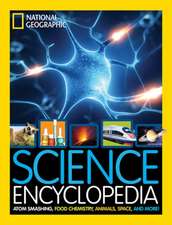Trees, Truffles, and Beasts: How Forests Function
Autor Mr. Chris Maser, Dr. Andrew W Claridge, Professor James M Trappeen Limba Engleză Paperback – 3 ian 2008 – vârsta ani
In today's world of specialization, people are attempting to protect the Earth's fragile state by swapping limousines for hybrids and pesticide-laced foods for organic produce. At other times, environmental awareness is translated into public relations gimmicks or trendy commodities. Moreover, simplistic policies, like single-species protection or planting ten trees for every tree cut down, are touted as bureaucratic or industrial panaceas.
Because today's decisions are tomorrow's consequences, every small effort makes a difference, but a broader understanding of our environmental problems is necessary to the development of sustainable ecosystem policies. In Trees, Truffles, and Beasts, Chris Maser, Andrew W. Claridge, and James M. Trappe make a compelling case that we must first understand the complexity and interdependency of species and habitats from the microscopic level to the gigantic. Comparing forests in the Pacific Northwestern United States and Southeastern mainland of Australia, the authors show how easily observable species, trees and mammals are part of a complicated infrastructure that includes fungi, lichens, and organisms invisible to the naked eye, such as microbes.
Eminently readable, this important book shows that forests are far more complicated than most of us might think, which means simplistic policies will not save them. Understanding the biophysical intricacies of our life-support systems just might.
Because today's decisions are tomorrow's consequences, every small effort makes a difference, but a broader understanding of our environmental problems is necessary to the development of sustainable ecosystem policies. In Trees, Truffles, and Beasts, Chris Maser, Andrew W. Claridge, and James M. Trappe make a compelling case that we must first understand the complexity and interdependency of species and habitats from the microscopic level to the gigantic. Comparing forests in the Pacific Northwestern United States and Southeastern mainland of Australia, the authors show how easily observable species, trees and mammals are part of a complicated infrastructure that includes fungi, lichens, and organisms invisible to the naked eye, such as microbes.
Eminently readable, this important book shows that forests are far more complicated than most of us might think, which means simplistic policies will not save them. Understanding the biophysical intricacies of our life-support systems just might.
Preț: 336.41 lei
Nou
Puncte Express: 505
Preț estimativ în valută:
64.38€ • 66.97$ • 53.15£
64.38€ • 66.97$ • 53.15£
Carte tipărită la comandă
Livrare economică 12-26 aprilie
Livrare express 11-15 martie pentru 86.39 lei
Preluare comenzi: 021 569.72.76
Specificații
ISBN-13: 9780813542263
ISBN-10: 081354226X
Pagini: 280
Ilustrații: 109
Dimensiuni: 152 x 235 x 20 mm
Greutate: 0.54 kg
Ediția:None
Editura: Rutgers University Press
Colecția Rutgers University Press
ISBN-10: 081354226X
Pagini: 280
Ilustrații: 109
Dimensiuni: 152 x 235 x 20 mm
Greutate: 0.54 kg
Ediția:None
Editura: Rutgers University Press
Colecția Rutgers University Press
Notă biografică
CHRIS MASER is a writer, environmental consultant, and master's level zoologist who has written over twenty books, including Mammals of the Pacific Northwest and Forest Primeval: The Natural History of an Ancient Forest.
ANDREW W. CLARIDGE is a research scientist with the Department of Environment and Conservation in New South Wales, Australia. He has authored or co-authored over fifty publications about the interactions among trees, truffles, and animals and undertaken research at postgraduate and postdoctoral levels in both Australia and the United States of America.
JAMES M. TRAPPE is a professor of forest science specializing in forest fungi at Oregon State University, Corvallis, and the author of almost four hundred journal articles and book chapters.
ANDREW W. CLARIDGE is a research scientist with the Department of Environment and Conservation in New South Wales, Australia. He has authored or co-authored over fifty publications about the interactions among trees, truffles, and animals and undertaken research at postgraduate and postdoctoral levels in both Australia and the United States of America.
JAMES M. TRAPPE is a professor of forest science specializing in forest fungi at Oregon State University, Corvallis, and the author of almost four hundred journal articles and book chapters.
Cuprins
Introduction
1 The Forest We See
2 The Unseen Forest
3 Trees, Truffles, and Beasts: Coevolution in Action
4 Of Animals and Fungi
5 The Importance of Mycophagy
6 Landscape Patterns and Fire
7 Forest Succession and Habitat Dynamics
8 Of Lifestyles and Shared Habitats
9 Lessons from the Trees, the Truffles, and the Beasts
1 The Forest We See
2 The Unseen Forest
3 Trees, Truffles, and Beasts: Coevolution in Action
4 Of Animals and Fungi
5 The Importance of Mycophagy
6 Landscape Patterns and Fire
7 Forest Succession and Habitat Dynamics
8 Of Lifestyles and Shared Habitats
9 Lessons from the Trees, the Truffles, and the Beasts
Recenzii
Accurate and authentic, Trees, Truffles, and Beasts makes a major contribution to the field of natural resource management. This is a clear and compelling argument that there's much more to forests than meets the eye.
This book is an excellent introduction to the world of mycorrhizal fungi in forests and their importance in food webs as highlighted by truffles. This book should encourage readers to investigate further the intricate and essential interactions occurring in forests, which make them work.
"The book provides excellent coverage of the symbiosis between trees, fungi, and animals, an orverarching theme. . . . Few works take these personal views into account to give such a holistic view of the forested landscape. Highly recommended."
The authors. all keenly qualified to write on the topic, begin by discussing the importance of sustainable ecosystem policies and preserving our environment, and then point out that to be able to do that, one must understand those environmental systems. What follows is an entire college course on just how forests work.
These authors weave together a broad array of personal observations and pertinent scientific research into a sweeping account of forest ecology and conservation. This book is an interesting and well-priced addition to the mycologist's bookshelf.
Trees, Truffles, and Beasts reveals a belowground world that we cannot see, and for that reason, often overlook when thinking about forests. The authors deftly link this belowground world of fungi and soil microorganisms to the aboveground world that we know. The story-telling style of writing makes the book engaging and easy to read, and at the same time, the book is packed with interesting facts.
"Lucidly written and accessible to professionals and the general public alike, the authors adeptly tease out the intimate details and fascinating ecological interactions of a world hidden within the soil. I highly recommend this book for a fascinating glimpse into the wondrous web life and complex ecological relationships that sustain our natural forests."
Descriere
Because today's decisions are tomorrow's consequences, every small effort makes a difference, but a broader understanding of our environmental problems is necessary to the development of sustainable ecosystem policies. In Trees, Truffles, and Beasts, Chris Maser, Andrew W. Claridge, and James M. Trappe make a compelling case that we must first understand the complexity and interdependency of species and habitats from the microscopic level to the gigantic. Comparing forests in the Pacific Northwestern United States and Southeastern mainland of Australia, the authors show how easily observable species, trees and mammals are part of a complicated infrastructure that includes fungi, lichens, and organisms invisible to the naked eye, such as microbes.















